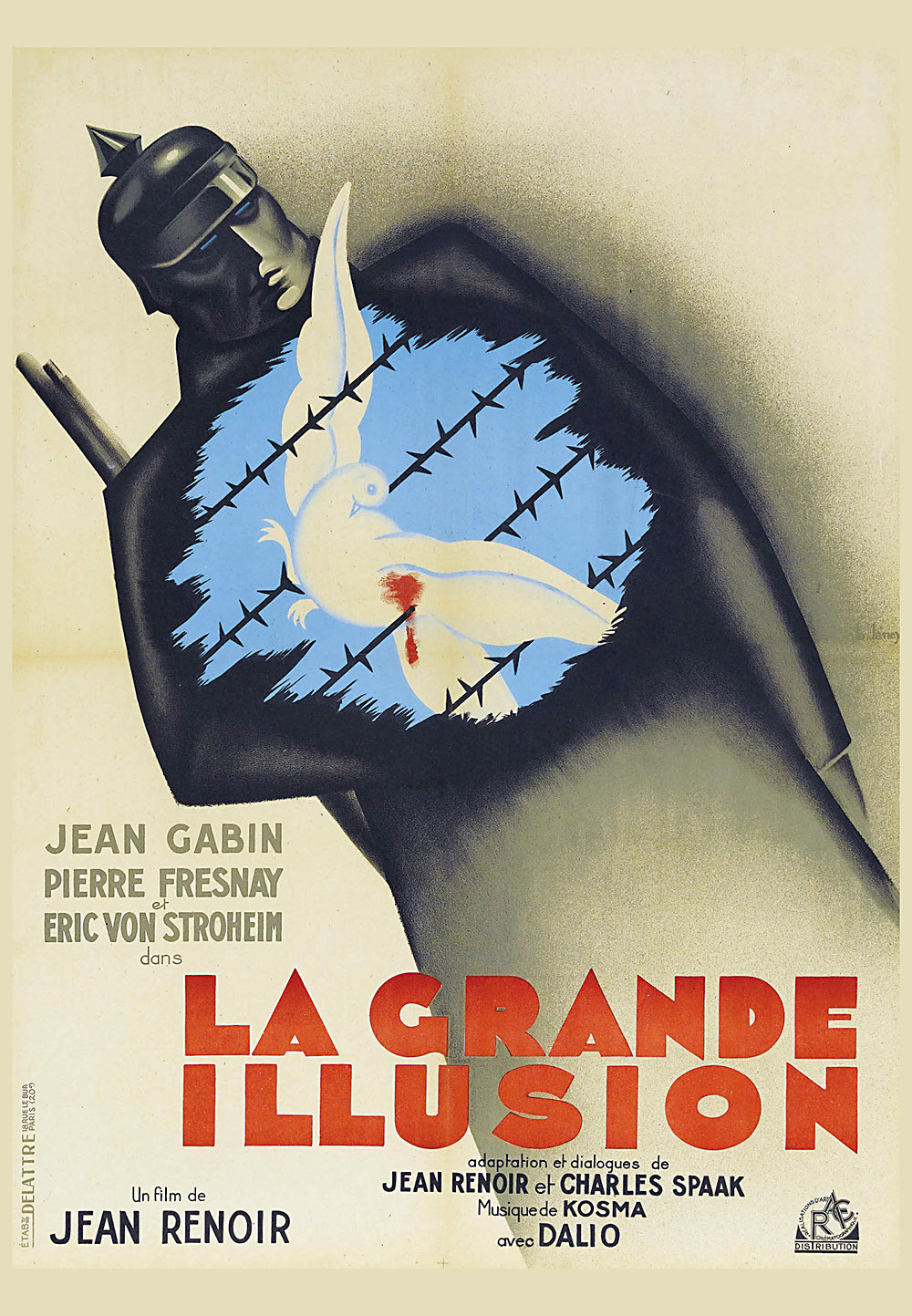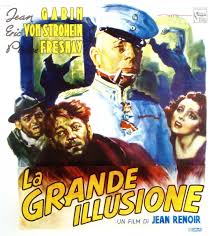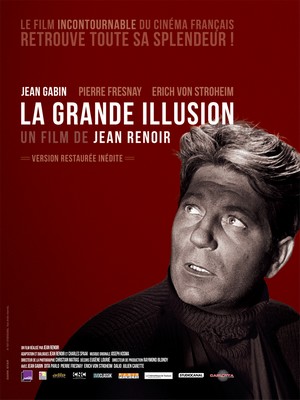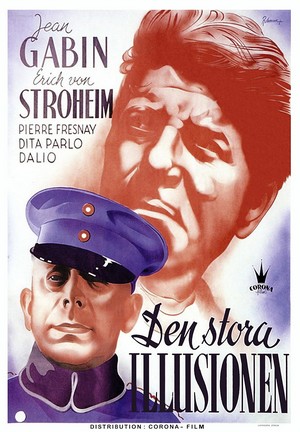


L'Observation attentive de l'affiche du film a permis à une élève de quatrième d'identifier du premier coup d’œil le thème de la guerre. Ensuite, l'analyse plus approfondie de la composition de l'image a mis en valeur l'aspect métaphorique de la composition en diagonales, révélant le sens de cette croix centrée sur un symbole classique de paix et de liberté, donc respectivement malmenée par cette statue métallique de soldat et empêchée par les barbelés.
Un élève a d'autre part remarqué la forme typique du casque des soldats
allemands de la première guerre mondiale ; une autre a dénoté que les couleurs
étaient celles du drapeau Français, puis un dernier que le titre était de la
même veine chromatique que la blessure de la colombe au cœur de l'image.
Certains enfants en ont finalement déduit des hypothèses quant au genre du film,
et cela a attisé leur curiosité puisque l'un d'entre eux s'est même posé la question suivante :
même posé la question suivante :
Quelle est cette grande Illusion ?..
C'est notamment en étudiant la séquence du huis-clos entre prisonniers que
certains élèves ont pu formuler la réponse à cette question :
Des plans dont le cadrage cloisonne à l'identique une suite de photogrammes
narratifs, représentant des ennemis, de part et d'autre d'une fenêtre
métonymique ( figure de style dont une partie évoque le tout ).
Il s'agit en l'occurrence d'un objet entre deux espaces, entre deux réalités
opposées, transparent mais aussi réfléchissant ; un objet à la fois symbole de
la future évasion et métaphore du style réaliste et réflexif de J.Renoir : «
entre réalité et fiction », comme en a conclus pertinemment une élève.
À Mattéo d'ajouter que la grande illusion peut-être tout autant le cinéma du
réalisateur, que l'espoir de la fin de la guerre : « comme le dit l'acteur
J.Gabin à un moment ».


At
first glance any pupil llowed a pupil of fourth to identify the theme of war
which is in this movie. Than the more thorought analysis of the composition of
the image emphasized the metaphoric aspect of the composition in diagonals,
revealing the sense of this cross centered on a classic symbol of peace and
freedom, thus respectively manhandled by this soldier's metallic statue and
prevented by barbed wires.
A pupil noticed on the other hand the typical
shape of the helmet of the German soldiers in World War I; another one denoted
that colors were thoses of the French flag, then the last one that the title was
of the same chromatic vein as the wound of the dove at the heart of the image.
Somme children finally deduced from it from hypotheses as for the kind(genre) of
the movie, and it instigated their curiosity because one of them it is even
asked(raised) the following question:
What is this big Illusion?..
After studying closely the sequence
when prisoners are behind closed doors, some pupilswere able to answer that
question
:
Plans the centring of which divides up as
before a continuation of narrative photograms, representing enemies, on both
sides
of a
metonymical window (stylistic device a part of
which evokes the whole).
It is in this particular case about an object
between two spaces, between two opposite(opposed) realities, transparent but
also reflecting; an object at the same time symbol of the future escape and the
metaphor of the realistic and reflexive style of J.Renoir: " between reality and
fiction ", as concluded from it pertinently a pupil.
For Mattéo, the big illusion could be as well the cinema of the director, as the hope to see the war end, « as puts it the actor J.Gabin in the movie ».